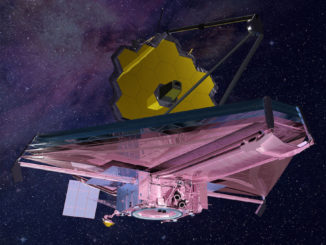
Astronomers using the James Webb Space Telescope have found a 3-million-lightyear-long string of 10 galaxies that existed just 830 million years after the Big Bang, evidence of an early filament in the “cosmic web” that may evolve into a massive galaxy cluster.
The filament is anchored on one end by a brilliant quasar – a supermassive, active black hole – that outshines its host galaxy. The filament is one of the earliest such structures yet seen that is associated with a quasar.
“I was surprised by how long and how narrow this filament is,” said team member Xiaohui Fan of the University of Arizona. “I expected to find something, but I didn’t expect such a long, distinctly thin structure.”
Galaxies are not positioned randomly across the universe. They they come together to form vast galactic clusters along interconnected filamentary structures forming what astronomers refer to as the cosmic web.
Among many projects underway with Webb, the infant filament was found as part of a study – ASPIRE – to identify the environments around the earliest black holes by observing quasars that existed within a billion years of the big bang.
“The last two decades of cosmology research have given us a robust understanding of how the cosmic web forms and evolves,” said team member Joseph Hennawi of the University of California, Santa Barbara. “ASPIRE aims to understand how to incorporate the emergence of the earliest massive black holes into our current story of the formation of cosmic structure.”
As part of the ongoing study, researchers have confirmed the central black holes in eight such early quasars were enormously massive, ranging in size from 600 million to 2 billion solar masses. How such black holes were able to grow so fast is not yet known.
But Feige Wang of the University of Arizona in Tucson, the principal investigator for the ASPIRE program, said two criteria must be satisfied.
“First, you need to start growing from a massive ‘seed’ black hole. Second, even if this seed starts with a mass equivalent to a thousand suns, it still needs to accrete a million times more matter at the maximum possible rate for its entire lifetime.”
While the criteria seem clear, how the process might have emerged in the early universe remains a mystery.



